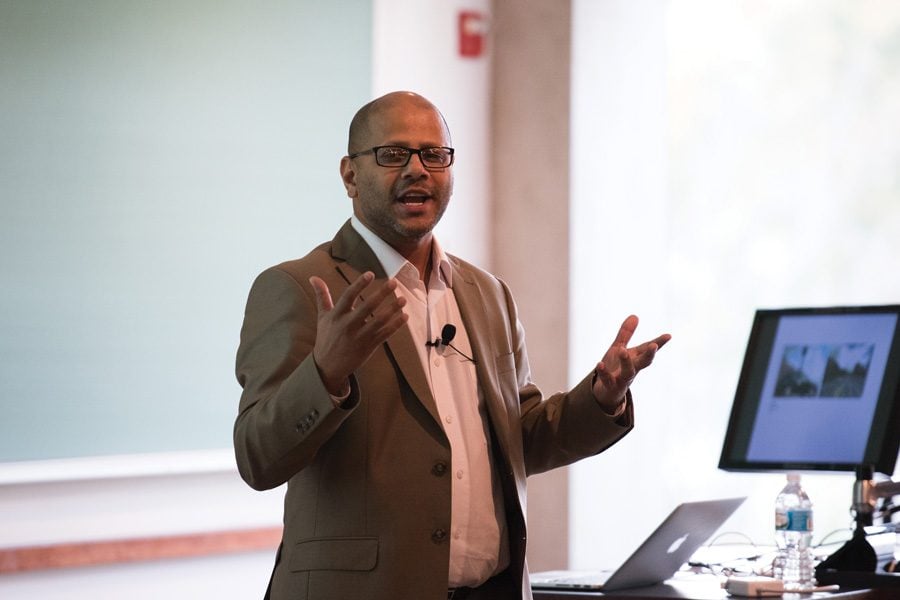Artist exposes his life to resist FBI, talks intersection between art, engineering
Lauren Duquette/Daily Senior Staffer
Interdisciplinary artist Hasan Elahi speaks at an event co-hosted by the Block Museum of Art and the McCormick School of Engineering and Applied Science. Elahi discussed the intersection of art and engineering.
October 31, 2016
Ironically, recording and publicizing his entire life served as a form of resistance against an FBI investigation for Hasan Elahi.
During his talk — which aimed to explore the intersection between art and science — presented by the McCormick School of Engineering and the Block Museum of Art, the Bangladeshi-American artist spoke to more than 40 people about data and art in his work.
After erroneously becoming subject to a months-long FBI investigation following 9/11, Elahi said he decided to channel the experience into an art project that tracks and publicizes his entire life.
Though he originally sent detailed emails and photos of his everyday life to his FBI agent as an alibi against suspicions, he eventually decided it would be more effective to make his life accessible to the public, he said.
“All these photos that you’re seeing are photos that I sent to the FBI, but there’s also a parallel (public) database,” Elahi said, showing a slideshow of his photos. “Obviously I have an FBI file, and the FBI has information about me, but by me giving it to you directly, it cuts out the middleman and thus it devalues the currency of the FBI.”
He compared the public database, which is called Tracking Transience and is available online, to social media platforms like Facebook, which has more than a billion users worldwide. Anyone who documents their life online is practically doing the same thing as he is, he said.
“On an individual basis, this is purely symbolic,” he said. “But if 1.6 billion people start doing this to this level of detail, it would force an entire restructuring of the intelligence system.”
Susy Bielak, Block’s associate director of engagement and curator of public practice, said Elahi was a great first speaker for the series to explore art in the context of engineering.
“Part of the work that we do at the museum is build connective tissue around the University and between the campus and civic life,” she said. “The artists who we’ve selected to come here have the kind of curiosity, vision, insight that again is that point of simultaneity between artistic practice and engineering.”
Elahi explained his artistic work — which is often referred to as media art — incorporates a variety of multimedia techniques such as probability and science to tackle interesting questions.
“I’m not interested in solving the art problem in the most direct way,” he said. “I’m interested in going around it and how to navigate it from a very different experience.”
Abraham Chen, second-year graduate student in Kellogg and member of the Segal Design Institute’s Science, Engineering Design Innovation program, said he would like to see more events like this that connect arts with science.
“I really liked how he was taking sort of quotidian experiences and connecting it to much broader theories and trends,” Chen said. “It would be great to see a lot more of this stuff in my program, for example.”
Email: [email protected]
Twitter: @yvonneekimm


